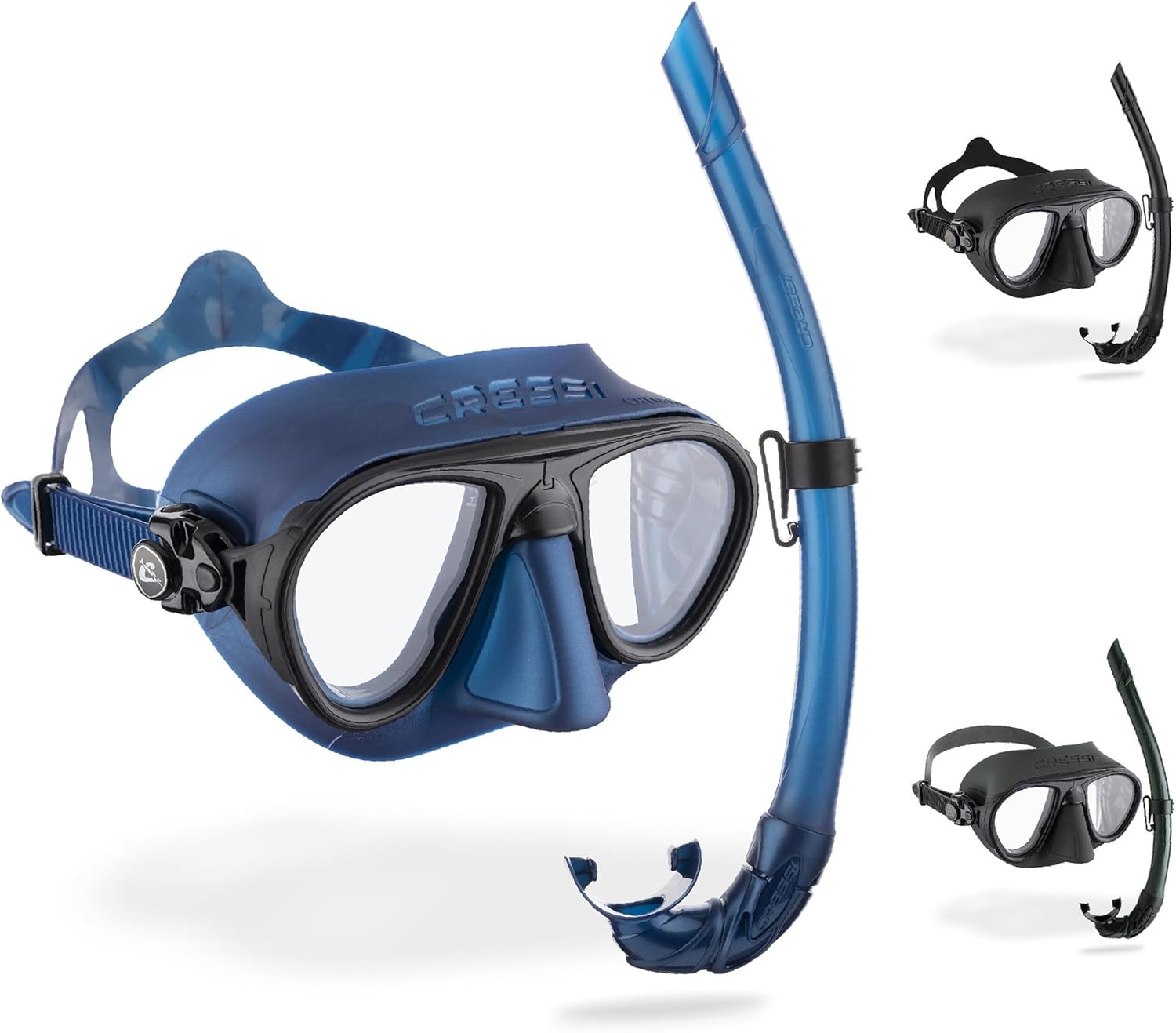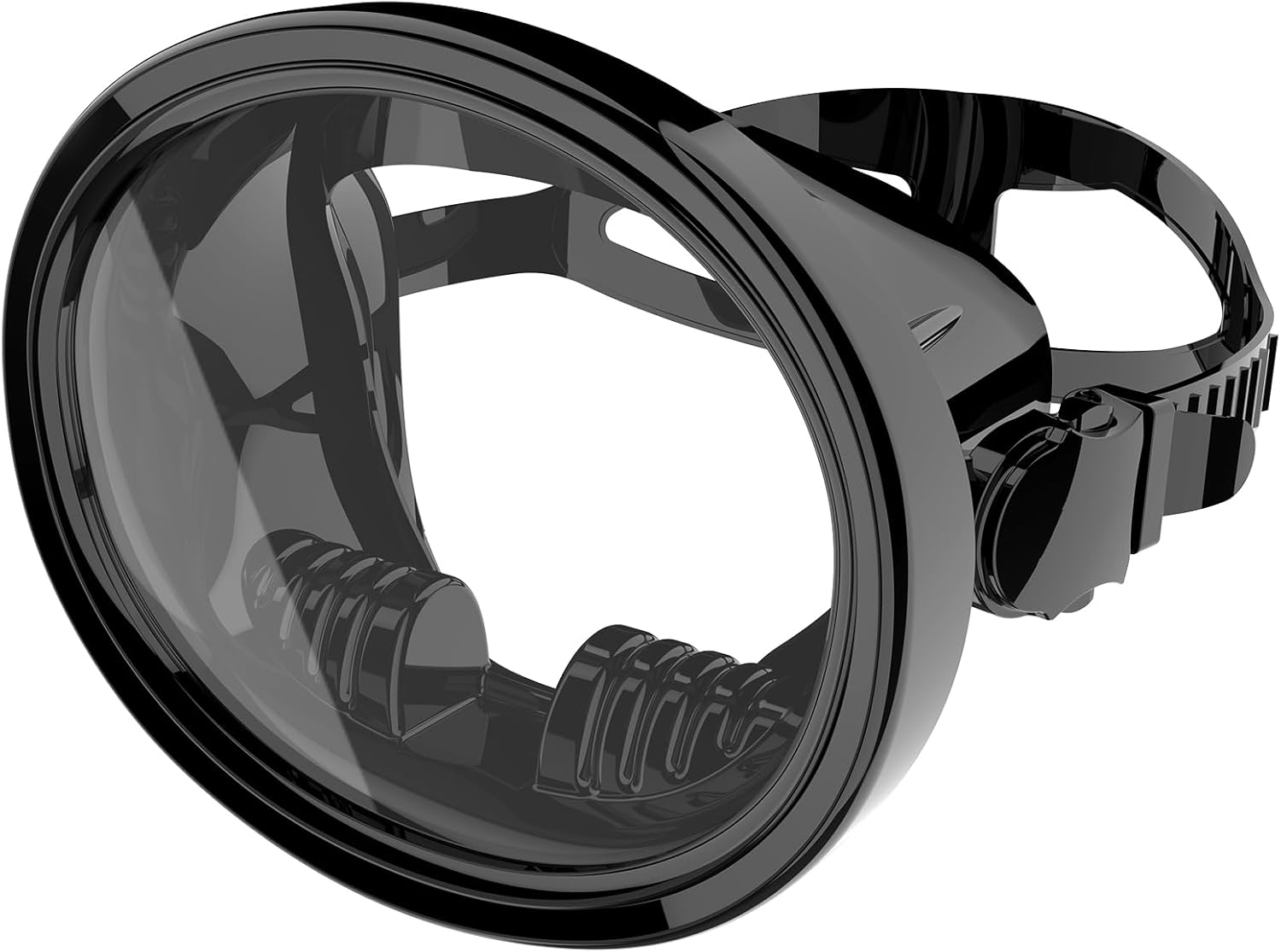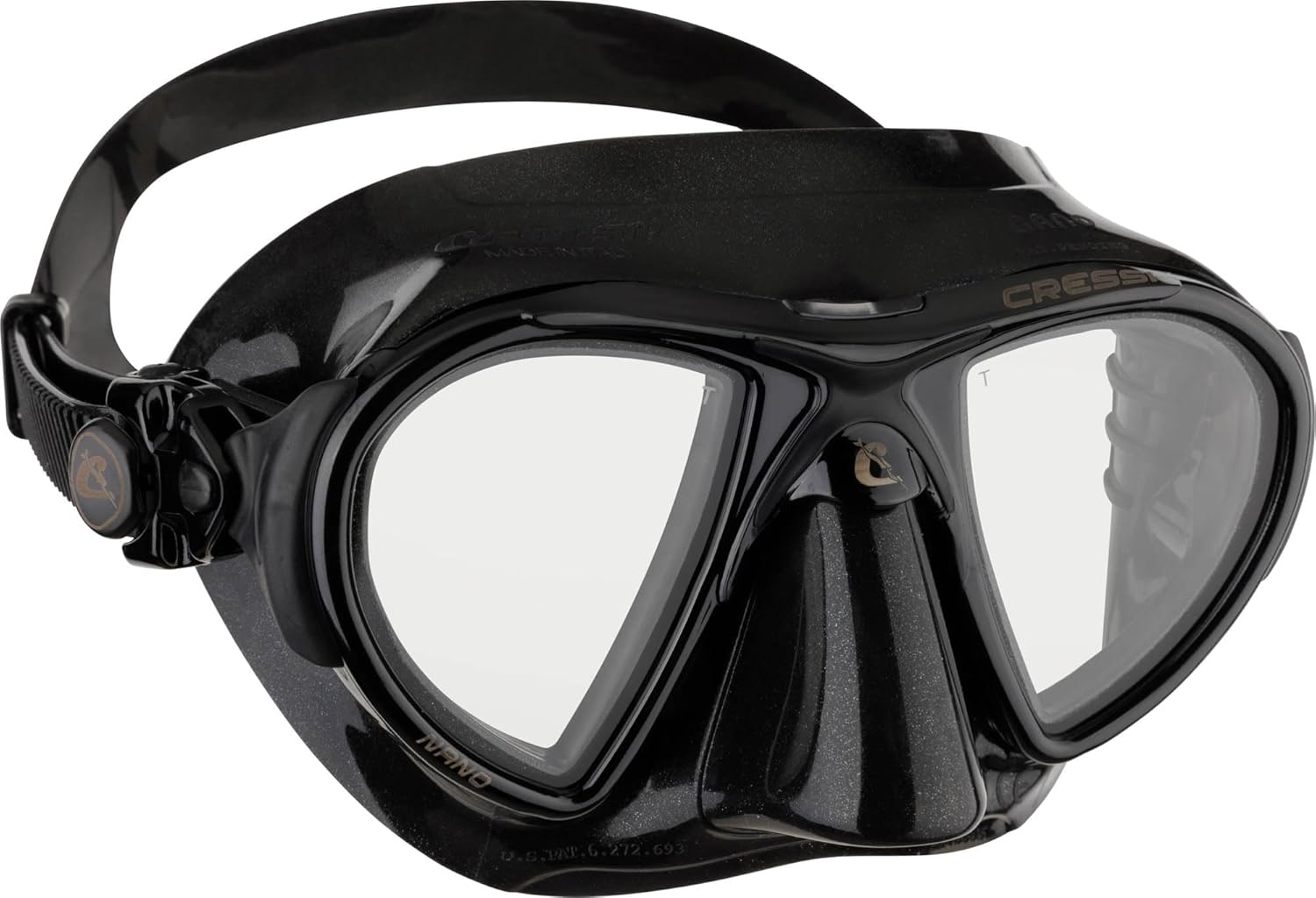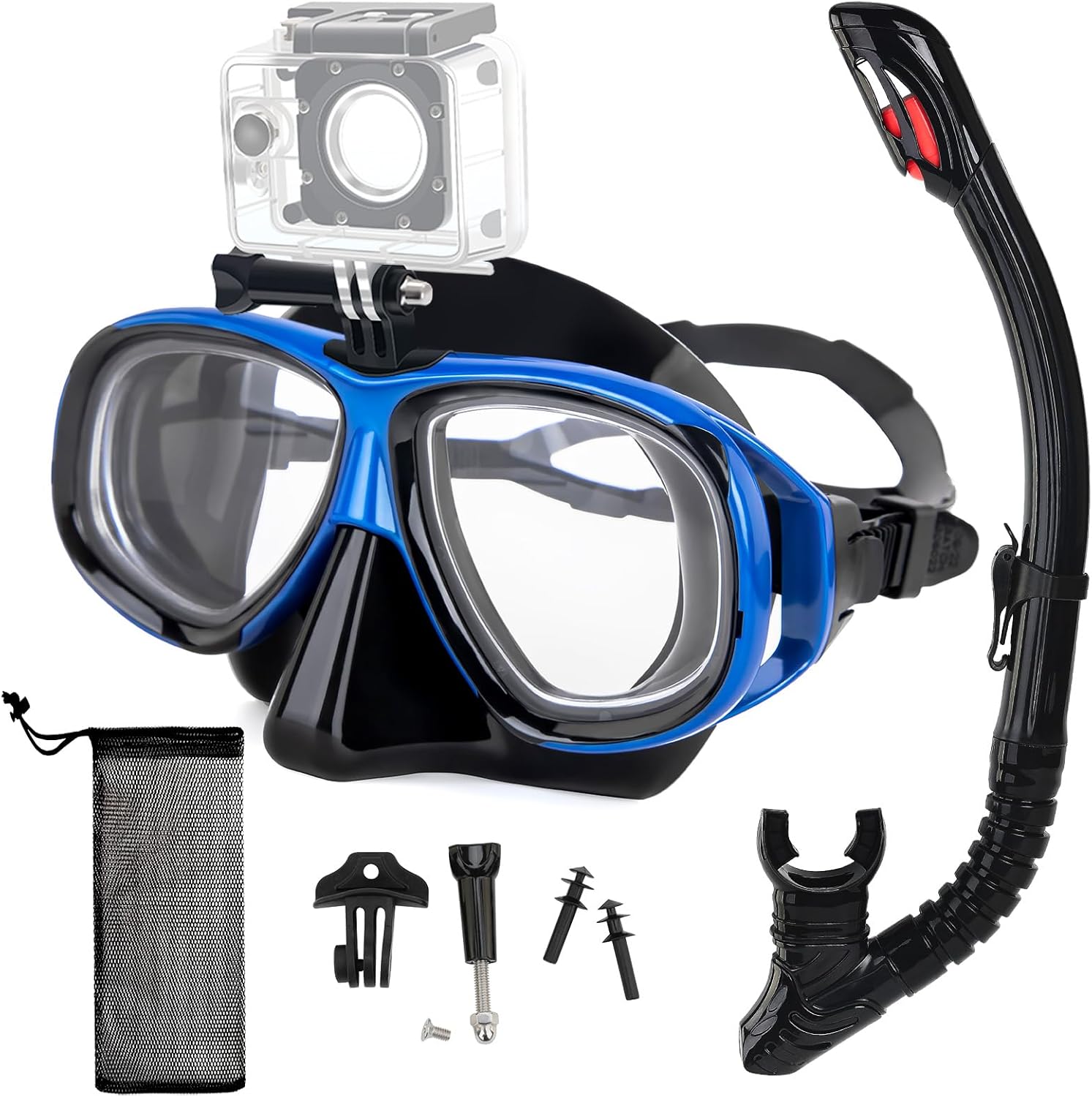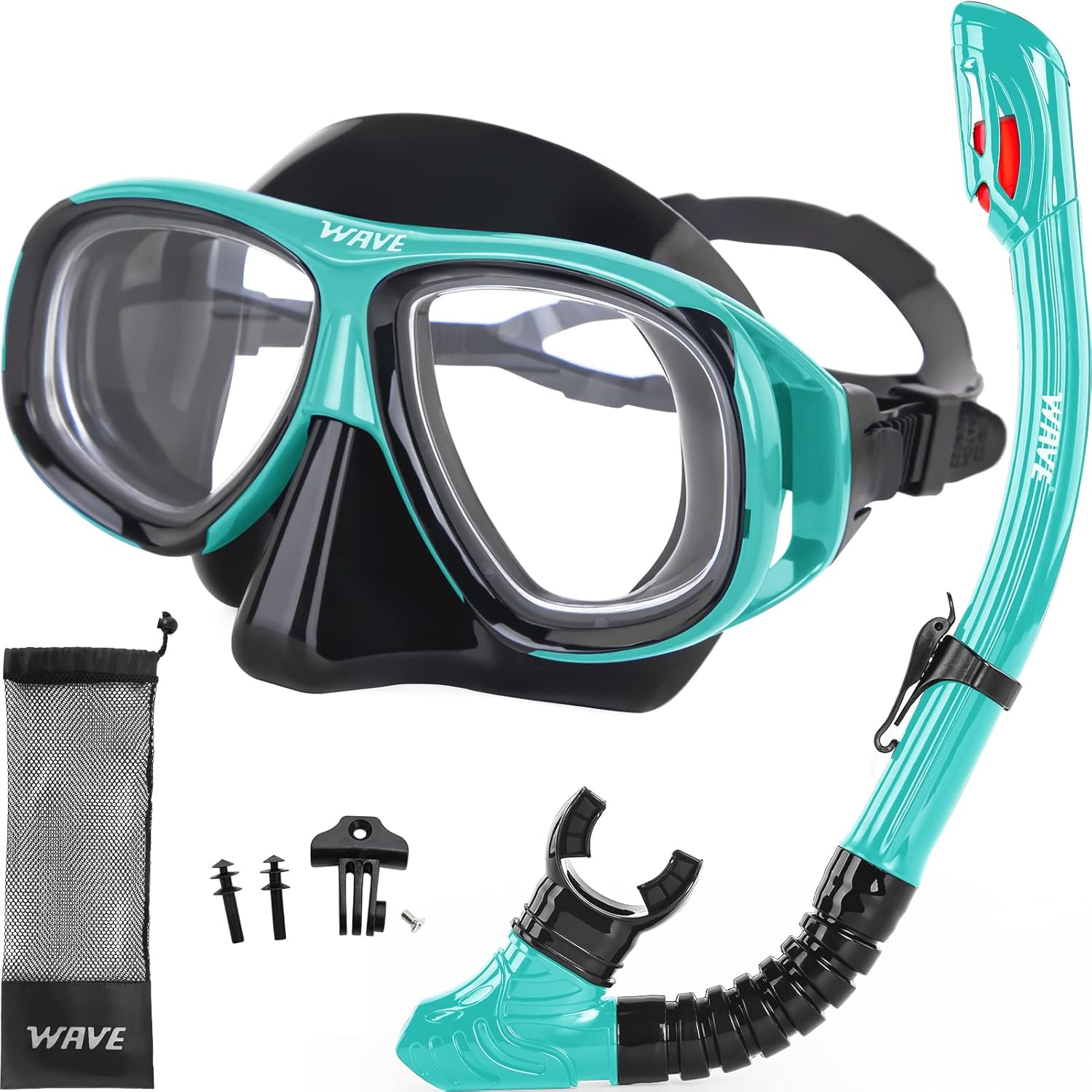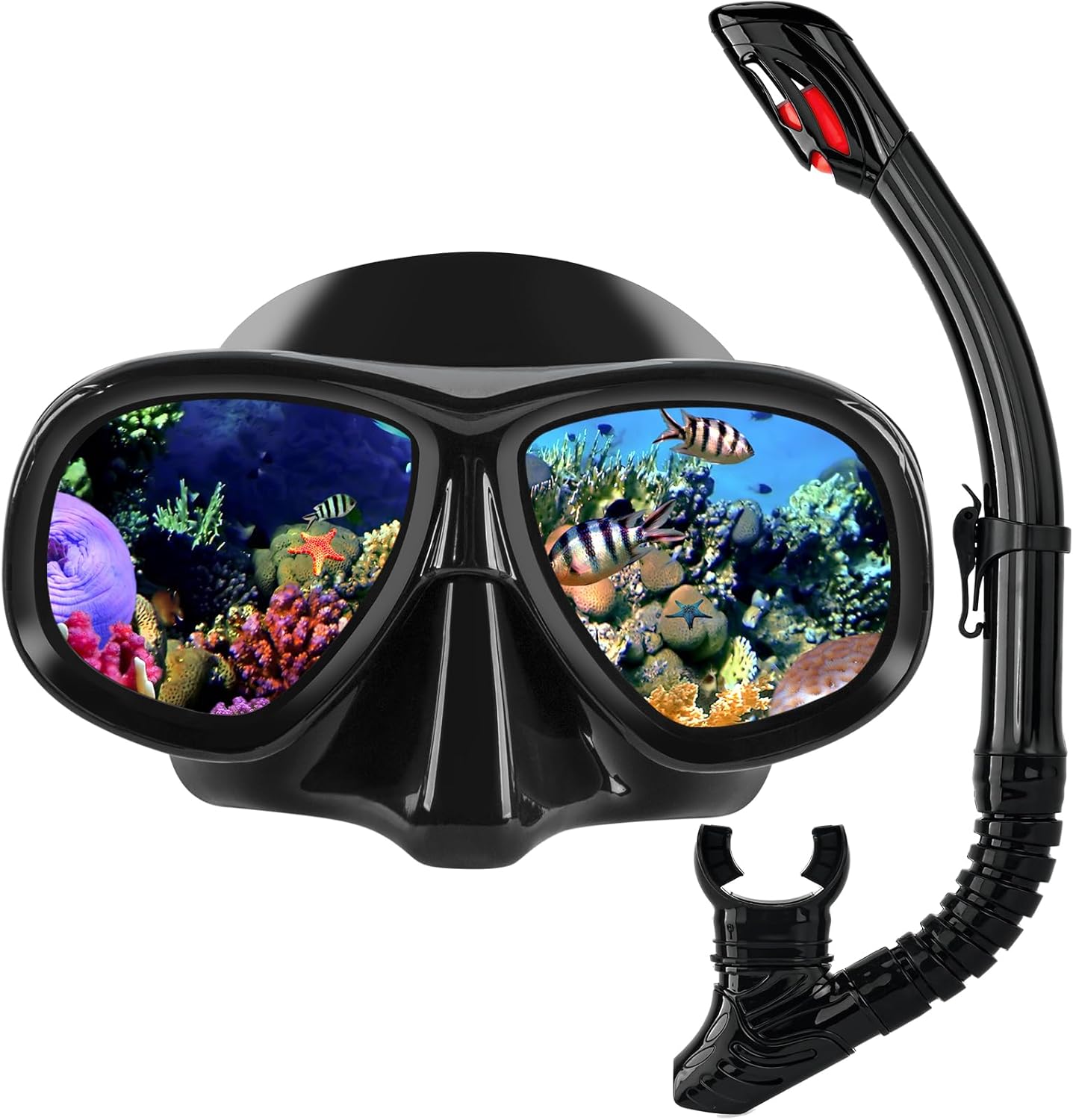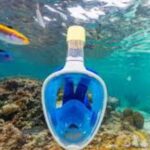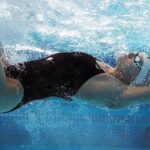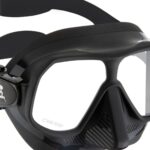How To Clear Your Mask When Freediving – The Complete Guide
If you’ve ever wondered how to clear your mask when freediving, you probably had a very personal reason: water sneaked into your mask at the worst possible time, and suddenly your relaxing glide turned into an underwater slapstick routine.
Nothing says “graceful freediver” like looking up at a fish through one eye while the other eye squints under a puddle of seawater.
But the truth is, clearing your mask is one of the most fundamental skills you’ll ever learn in the water. It’s not about style points. It’s about comfort, safety, and keeping your head clear when the ocean is swirling around you.
How to Clear Your Mask When Freediving
Here’s the sequence you’ve been looking for:
- Stay calm. Don’t jerk your head or try to breathe through your nose. Keep breathing through your mouth if you’re still at the surface.
- Tilt your head slightly back so your mask’s bottom edge is the lowest point.
- Place light pressure with two fingers at the top of your mask frame to hold the seal.
- Blow out slowly but firmly through your nose. The air you exhale pushes the water down and out of the bottom skirt.
- Resume normal mouth breathing and check that the mask has resealed.
That’s it. That’s the essential method for how to clear your mask when freediving in water. With practice, it becomes second nature, so much so that you’ll hardly think about it. The trick isn’t force—it’s calmness and technique.
Why Water Floods Your Mask in the First Place
A properly fitted freediving mask will rarely flood. Still, water has a way of sneaking in, especially when:
- A strand of hair breaks the mask’s seal.
- You exhale through your nose unintentionally.
- The skirt folds from strap tension being too tight.
- Facial movement, like smiling or jaw adjustment, cracks the seal.
Understanding why water enters helps you stop it before it becomes a constant battle. Think prevention first: check your mask fit on land, rinse it in the water, and always adjust before descending.
Staying Calm Underwater: The First Real Test
One of the most common reasons new divers panic isn’t the depth or the breath-hold, it’s a flooded mask. Water in your nose and eyes can feel like disaster, but it doesn’t have to be. The body reacts strongly to water on the face, but if you keep reminding yourself that you still have air in your lungs and control over your next move, you’ll clear it easily.
Practical trick: when practicing how to clear mask underwater, try it sitting in a shallow pool. Partially flood your mask on purpose, clear it, then repeat until it feels boring. By the tenth time, your brain realizes there’s nothing dangerous about it.
Partial Flood vs. Full Flood: What’s the Difference?
- Partial flood: A small leak, often from the nose pocket or skirt. You only need a small exhale to push the water out.
- Full flood: Your mask fills up completely, sometimes from a poor fit or if it’s intentionally flooded for training. This requires a longer, steadier exhale.
Both use the same principle: air in, water out, but the full flood demands calmness and a slower, stronger exhale.
|
|
|
|
How to Clear Your Mask When Freediving for Beginners
For beginners, the hardest part isn’t technique, it’s confidence. Beginners often:
- Blow too hard and disturb the seal.
- Forget to tilt their head back.
- Panic and inhale through the nose.
To avoid this, break it down: practice shallow, one step at a time, and don’t try it first in open water. Controlled repetition in a pool builds the reflex.
Practicing Drills That Build Muscle Memory
Freediving instructors teach drills in progressions. Here’s a proven sequence:
- Surface Drill: Sit with your mask on, exhale slightly through your nose to let in some water. Clear it while breathing through your mouth.
- Kneeling Drill: In shallow water, kneel and flood your mask fully. Clear it without standing up.
- Horizontal Drill: Swim slowly underwater, allow water in, then clear while gliding.
- Dynamic Drill: Practice during short freedives, always with a buddy nearby.
This staged practice is how you normalize the process and make how to clear your mask when freediving something you do instinctively, not something you fear.
Head Position and Breathing Technique
Head position is more important than most people realize. Tilting slightly back ensures gravity helps water flow toward the bottom edge, the exit point. If your head is level, water just sits there.
The breathing technique matters too. A strong but controlled exhale is key. Too weak, and water lingers. Too forceful, and you may break the seal. Practice the sweet spot until your body knows the right pressure.
|
|
|
|
Troubleshooting Common Problems
- Fogging: Often mistaken for flooding. Use defog solution or spit rinse before diving.
- Constant leaks: Likely a fit issue. Adjust strap or test another mask size.
- Water keeps coming back: Check for hair under the skirt or mustache interference. A small trim or silicone sealant helps.
Sometimes, the problem isn’t you, it’s your gear. A good freediving mask fits naturally without needing the strap too tight.
Gear Questions That Always Come Up
- Are freediving masks good for lap swimming? Not really. They’re designed for depth and comfort on breath-hold, not for pool laps where water resistance and fogging become distracting.
- Can you use a freedive mask for scuba? You can, but it’s not ideal. Freedive masks have lower volume for easier equalization. Scuba divers often prefer more field of view, which comes with higher-volume masks. If you’re assembling a full scuba gear set, keep that in mind.
Safety First: Knowing When to Abort
Never treat mask clearing as a test of endurance. If you’re struggling, surface calmly. If you’re diving with a buddy, use clear hand signals. Freediving culture emphasizes calm control, not bravado. Remember: comfort in practice builds safety in depth.
FAQ on How to Clear Your Mask When Freediving
How To Clear Your Regulator Underwater?
While this belongs more to scuba than freediving, the principle is similar: exhale firmly into the regulator or use the purge button to push water out.
How To Clear Snorkel Mask?
Same technique as a freedive mask. Water enters the skirt, exhale through the nose while pressing the frame.
How To Clear Snorkel?
Blow sharply through the snorkel tube to force water out. Some snorkels include purge valves to make this easier.
How To Clear Your Mask When Freediving In Water At Depth?
The same as at the surface, but more critical to stay calm, as depth pressure adds to the discomfort. Equalize first, then clear your mask.
|
|
|
Extra Tips From Instructors
- Keep your mask strap at a 45-degree angle, not straight across the back of your head. This improves the seal.
- Rinse your face with water before diving. It reduces the oil layer that causes leaks and fog.
- If you wear contact lenses, close your eyes during a full flood clear. Saltwater under a lens can sting badly.
- Always dive with a buddy, especially when practicing new skills.
The Bottom Line on How to Clear Your Mask When Freediving
So, how to clear your mask when freediving? Water in your mask will always be part of freediving, but panic doesn’t have to be. The method is simple: tilt back, press the top frame, exhale through your nose, reseal, and carry on. Practice drills, keep your gear in good condition, and always dive with safety in mind.
And if you ever find yourself laughing at the absurdity of looking like a goldfish in a bowl half full of seawater, good. That sense of humor might just be the best skill you carry underwater.
